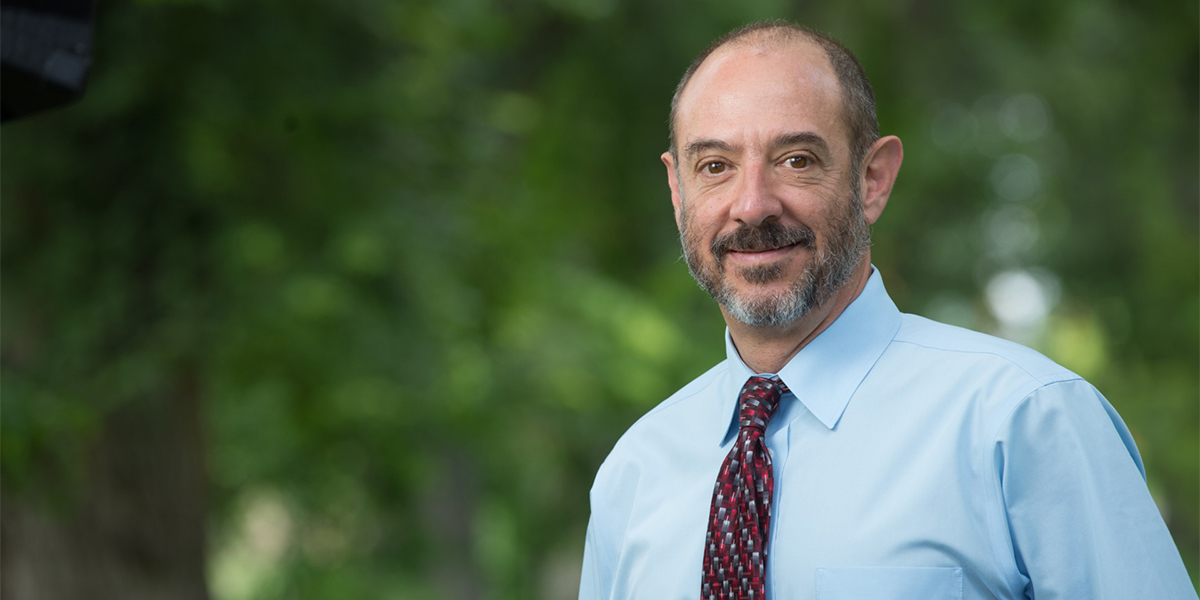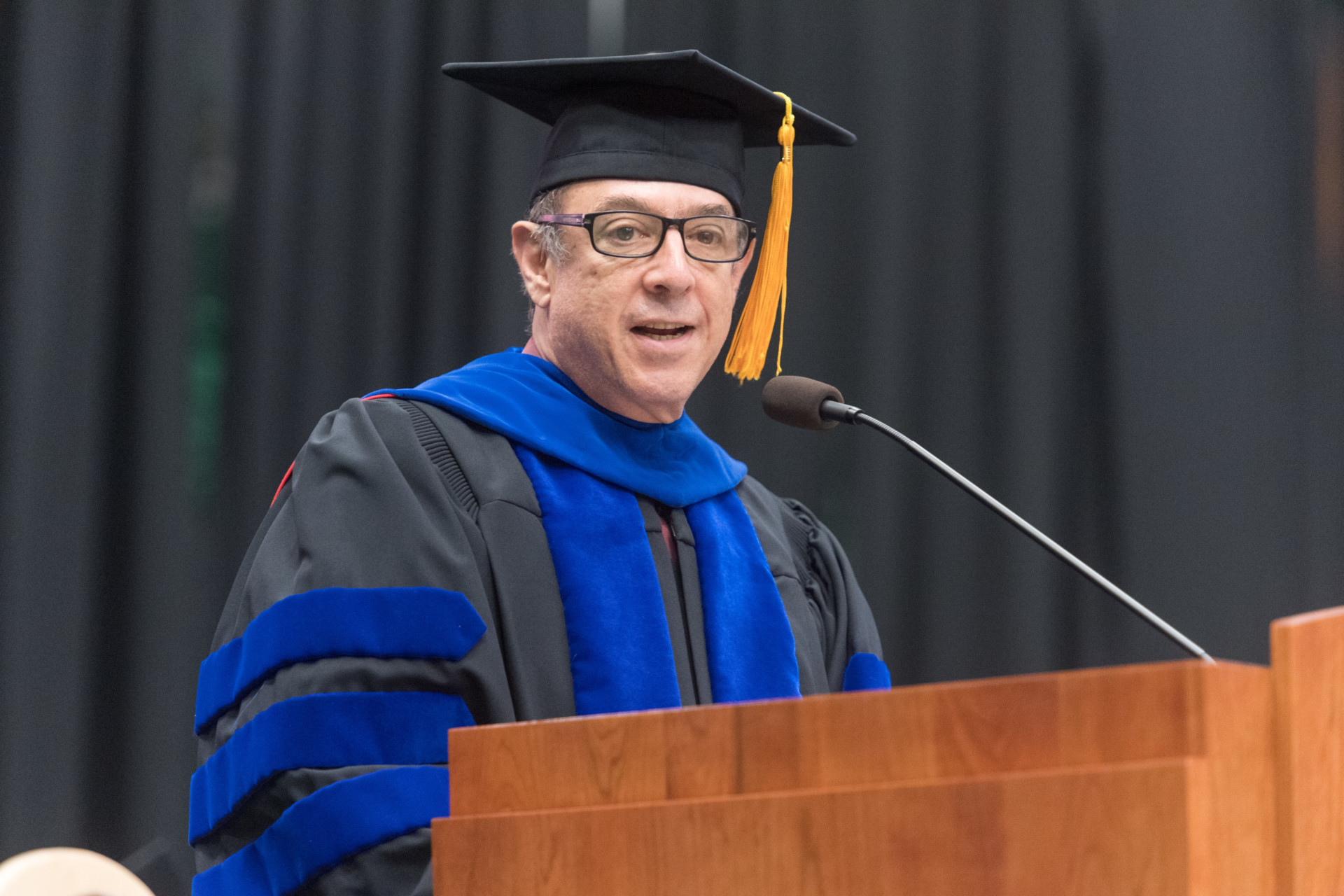
Professor and former Provost Rick Miranda has strived not just to excel in his work as a mathematician – and administrator – at Colorado State University but also to make that work accessible and enriching to others.
For this effort, he has been named a 2021 fellow of the American Mathematical Society. The honor was given to just 46 mathematicians around the world and “recognizes members who have made outstanding contributions to the creation, exposition, advancement, communication, and utilization of mathematics,” the society notes.
“Rick is a consummate scholar, colleague, and all-around tremendous person,”” said Jan Nerger, dean of the College of Natural Sciences, where Miranda is now a professor in the Department of Mathematics. “Whether he is teaching a class, balancing a crucial University budget, or delighting listeners with novel perspectives about mathematics in the world around us, he exemplifies all that the American Mathematical Society seeks to honor, and more.”
Miranda joins Professor Rachel Pries as only the second CSU faculty member to be named into the AMS’s fellow program, which was started in 2013. Pries was named in 2018 “for contributions to arithmetic geometry and for service to the mathematical community.”
After receiving his Ph.D. in mathematics from the Massachusetts Institute of Technology, Miranda performed postdoctoral research at the Institute for Advanced Study in Princeton and the University of Chicago before joining the faculty at CSU in 1981. In 1997 he became chair of the mathematics department and in 2002 was named dean of the college.
In 2009, as the country was reeling from the Great Recession, he was named provost and executive vice president of the University. In that role, working alongside former President Tony Frank, he helped keep the University on track, increased graduation rates, and improved access to higher education.
“Rick’s true enjoyment of mathematics is what informs his ability to devise elegant solutions to complex problems – all of which made him a great provost and now a great chief academic officer for the CSU System,” Frank, now chancellor of the System, said. “The latest recognition by the American Mathematical Society reflects how deeply Rick is admired and respected by all those who work with him – and the countless students for whom he remains a mentor and trusted teacher long after they graduate.”
Miranda’s dedication is apparent right off the bat. “Rick impressed me from the moment I met him with his grasp of all of the nuances and challenges that we needed to consider to move the university forward,” said CSU President Joyce McConnell. “A scholar at his level is always focused on finding new and creative ways to solve problems, and he brought that lens to his work as an administrator. The fact that he kept up his own research even while provost is absolutely a testament to his commitment to his field.”
That scholarly work and dedication are now being recognized on an international scale. We asked Miranda to share his thoughts on this honor – and what he wishes the rest of us knew about his field.
Q: How did you learn that you had been named an American Mathematical Society Fellow?
A: I was reading through my email inbox over breakfast one morning, and there it was, an email from the American Mathematical Society. I had to read it twice to really believe it!
Q: What does this honor mean to you?
A: The statement on the website that describes why they named me a Fellow this year says: ‘for contributions to algebraic geometry, especially the study of degenerations, and for high-quality exposition.’ There are three aspects of this that are quite meaningful to me.
First and most obviously is the recognition that my articles and books over the years have been appreciated and have had an impact in moving the field of geometry forward. It’s the hope of every researcher, I suppose, that one’s work will be seen as valuable to students and colleagues, not only currently, but in the future too.
Second is the reference to ‘high-quality exposition’ – this was quite surprising, and I was delighted to read it! I’ve always tried hard to write with clarity and organization, which one doesn’t always see so pervasively. I’ve found that putting myself in the position of the student rather than the teacher really helps. It’s not much of a stretch either – the nature of research always starts with a question that one doesn’’ know the answer to, and the student and seeker inside of us tries to find a way toward understanding.

The third aspect I’d like to mention is that I’ve been in upper administration at the University for the past 18 years; a little more than six as dean and almost 12 as provost. I’m lucky that I was able to maintain some forward progress, in all these years, in my mathematical life, even though that was not strictly in the job description. For most of that time, Tony Frank was my supervisor, and he gave me the freedom to continue to think about mathematics in the cracks of my time, for which I am very grateful.
Q: What is one thing you wish more people knew about the field of mathematics?
Sorry, there are actually two things: ubiquity and beauty.
Ubiquity: Most people think mathematics is mainly for science and engineering. But when one looks just a little bit closer, one sees mathematics – and rather deep mathematics at that – in almost every human endeavor. Just to name a few examples, in the social sciences voting theory uses quite sophisticated math to try to explain some of the phenomena involved in making societal choices. Gerrymandering is being given a lot of attention by mathematicians these days, as it involves statistics and geometry in interesting ways (and I hope public policy makers are listening). And some of my favorite connections across the University are with colleagues in the arts and humanities. Symmetry, perspective, and fractal constructions have been having an impact in the arts for centuries, and mathematicians have made profound contributions to parts of philosophy in their probing of the nature of infinity, of proof, and of what can be known.
Mathematics is all around us, actually!
Beauty: When I am thinking about algebraic geometry and the interplay of the geometric properties of curves, surfaces, and higher-dimensional objects – with the polynomial equations that define them – it’s almost like one is transported to a different world completely. This world is populated by a cast of characters that don’t exist anywhere else: twisted cubic curves in three-dimensional space, planar curves with six cuspidal singularities, secants and tangents, sums of power of linear polynomials. The interlocking relationships between all these characters in this very different world is endlessly fascinating. And, as with many things in life, the more one knows, the more beautiful it all appears. I’m very fortunate to be able to visit this world at almost any moment, just by staring at a whiteboard.
Q: You had planned to take a sabbatical this summer. What are you currently working on?
A: I’ve been working on some computations involving curves and surfaces in four-dimensional space this fall. I’ll teach in the spring semester and postpone my spring sabbatical plans to work with colleagues in Rome to next fall; we can all hope that things will be in better shape across the globe by then.
And Miranda will undoubtedly continue to bring his keen eye and quick wit to his research, teaching, and System endeavors.
“Rick’s ability to apply his mathematical foundations to administrative funding issues was a huge value to our administration,” Frank said. “I recall congratulating him on resolving an issue that had eluded the rest of us by saying we hadn’t been able to work through the math. Rick just smiled and replied, ‘Tony, that was arithmetic.’”